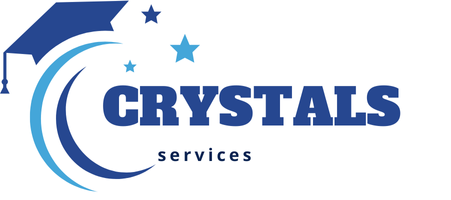Call queue software revolutionizes customer support by eliminating inefficiencies and ensuring seamless communication. This innovative tool enhances the customer experience, reduces wait times, and optimizes resource allocation. Businesses leveraging this technology not only improve operational efficiency but also foster trust and loyalty among their clientele. Discover how implementing call queue software can transform your customer support strategy and elevate your service delivery to new heights.
Introduction to Call Queue Software and Its Impact on Customer Support
In the rapidly evolving landscape of customer service, call queue software stands as a beacon of efficiency and improved customer interactions. This technology streamlines the handling of inbound calls by organizing them into virtual queues, allowing agents to address each one efficiently, thus enhancing overall customer satisfaction. In integrating such systems, modern businesses witness reduced wait times, boosting customer experience significantly. Incorporating call queue software benefits not only elevates customer service but also supports greater efficiency in customer support operations by optimizing resource allocation and raising agent productivity.
Also to discover : How Can UK Businesses Leverage Big Data for Competitive Advantage?
Key features such as automated call distribution and real-time analytics transform customer service metrics, particularly in reducing call abandonment and increasing first-call resolution rates. Utilizing advanced call routing techniques, companies can ensure that calls are directed to the most appropriate agents, thereby personalizing interactions and fostering customer loyalty. Continue your reading to explore how this technology continues to reshape the way businesses manage customer inquiries, enabling them to deliver exceptional service experiences while adapting to future demands efficiently.
Features of Call Queue Software
Call queue software offers a variety of features designed to streamline call handling and improve customer satisfaction. From automated call distribution to virtual hold, these tools provide businesses with the ability to manage high call volumes efficiently.
Have you seen this : How Can UK Retailers Use Influencer Marketing to Drive Sales?
Automatic Call Distribution
Automatic Call Distribution (ACD) revolutionizes how calls are handled, ensuring they reach the right destination efficiently. ACD system automates the entire call process by allocating incoming calls to the most suitable agent, based on preset criteria. This reduces waiting times and boosts agent productivity. By prioritizing calls based on urgency or customer profile, businesses can enhance their customer satisfaction levels dramatically. This automation allows agents to focus more on resolving customer issues rather than managing call traffic.
Advanced Routing Techniques
Advanced routing techniques are crucial for optimizing call management systems. These include skills-based routing, where calls are directed to agents with specific expertise, and time-zone-based distribution, which handles calls effectively according to regional service hours. Such sophisticated routing not only reduces operational costs but also transforms customer inquiries into solutions swiftly. Implementing these techniques effectively ensures seamless integration with existing CRM systems and scales with business growth, meeting evolving customer needs.
Real-time Analytics and Metrics
Harnessing real-time analytics and metrics is vital for measuring call queue efficiency. Equipped with dashboards, supervisors gain insight into call handling performance, helping them make informed decisions to enhance support operations. This data-driven approach contributes to a proactive support environment where feedback loops continually improve service levels. Metrics such as average handling time and first call resolution rates ensure that businesses can fine-tune strategies to reduce wait times and increase customer loyalty.
Benefits and Case Studies
In today’s competitive business landscape, delivering exceptional customer service is more important than ever. Call queue software provides businesses with the tools they need to streamline operations, enhance customer interactions, and gain a competitive edge.
Case Studies of Successful Call Queue Implementations
Implementing call queue software has transformed customer service across multiple industries. Successful use cases highlight the key benefits. A notable example is a global retailer that utilized conversational AI across channels, which led to reduced call volumes and operational costs. The integration of advanced call routing techniques ensured efficient inquiry handling and boosted employee productivity by allowing staff to manage workflow effectively.
Best Practices for Optimizing Call Queue Usage
To optimize call queue systems, businesses should integrate automated call distribution systems with real-time analytics. This empowers agents to make informed decisions swiftly. Implementing systems that allow for personalized customer interactions significantly enhances customer satisfaction. Training support staff to navigate these systems efficiently is crucial. Additionally, employing feedback loops in service improvement helps in refining customer service strategies consistently.
Addressing Operational Challenges and Enhancing Productivity
Call centers face many challenges, such as outdated systems. Using AI in customer support can minimize wait times and increase agent availability. Solutions like cloud-based platforms provide flexibility, enabling remote operations without compromising the quality of customer interactions. Ensuring seamless integration of call queue software with existing CRMs can further enhance productivity and effectiveness.
Implementation and Future Trends
Call queue software has revolutionized customer service by streamlining interactions and improving efficiency. This paper will delve into the practical implementation of call queue systems and explore the innovative trends shaping the future of this technology.
Steps for Successful Implementation of Call Queue Software
Implementing call queue software effectively requires a strategic approach. Begin by evaluating your current customer support automation tools to identify integration possibilities with new queue systems. Prioritize efficient customer support by selecting a user-friendly platform that aligns with your existing infrastructure. Training is pivotal; ensure support staff are well-versed in the software’s functionality to maximize its potential. Advanced call routing techniques, such as automated distribution based on skills or time zones, are vital to streamline operations.
Future Trends in Call Queue Management
The future of call queue technology is poised to transform customer service dynamics. Increasing reliance on AI-powered solutions will further enhance automated call distribution, reducing wait times and improving customer satisfaction. Expect greater emphasis on real-time data and analytics, empowering managers to optimize resource allocation based on live insights. These advancements will prioritize personalized customer interactions, fostering loyalty through tailored service experiences.
Integration with Other Customer Support Technologies
For seamless operations, it’s essential to integrate call queue software with existing customer support technologies like CRM systems. This connectivity supports a cohesive service approach, allowing for personalized responses based on complete customer histories. By synergizing with multi-channel support systems, businesses can ensure prompt, efficient service, enhancing overall agility and responsiveness.
















